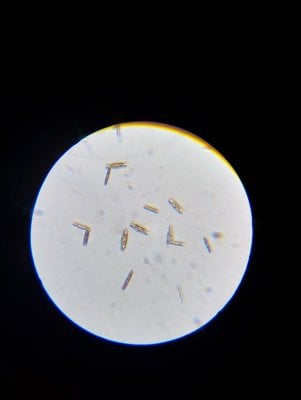- Joined
- May 22, 2016
- Messages
- 6,970
- Reaction score
- 10,747
Great thread, lots of good information! I just took a sample from my Biocube 32 will brown algae-like growth on sandbank and rock,
Here is the image, I am thinking this is Gymnodinium spp.. They are highly motile with light microscopy and measure about 20 microns x 30 microns. Can anybody confirm this genus and have any luck getting rid of them? I may start the metronidazole treatment and add sock filters, but I would need the 1 microns type to skim these out right?


!!! Beautiful pics, and I can say the pics definitely rule out all the major kinds of Dino that others have had bloom in their tanks.
Gymnodinium is a pretty good stab at it, but I'd assumed Gymnodinium were planktonic only, not attaching to surfaces. I'll look more later.
Any chance of a video?
And pics of the bloom in the tank?
I'm really curious what makes your system different than most other hobbyists to get a novel bloom type. I mean yeah there are 2000+ Dino species, but only a handful bloom in hobbyist tanks.
Are you running your bio cube skimmerless? Where did your livestock, rock etc come from? Where are you located?
In the meantime, I'd say that UV and or strong water column filtration (if you trust the scale on your pics, then 10 microns should be small enough) ought to reduce cell numbers. I'd also approach the nutrient side like any other dinos, until proven otherwise.




















